The 2014 field season at Hassanamesit Woods has commenced! Welcome back to the Hass Woods blog- my name is Jessica Rymer, a graduate student in the Historical Archaeology MA program at UMass. I’ll be posting throughout the next few weeks from the field school at Hassanamesit Woods. This summer four undergraduate students and five graduate students (including myself) will spend the next five weeks under the direction of Dr. Steve Mrozowski (accompanied by Dr. Heather Trigg) investigating the potential site of the of home of Deborah Newman, a Nipmuc woman who, according to local history, was said to live “across the road” from Lewis Ellis, whose father Amos Ellis helped in constructing the house of Sarah Burnee that have been the focus of the previous year’s excavations. Using the data recovered from an intensive STP survey that the Fiske Center conducted in 2010, we’ve begun placing 2M X 2M units around the test pits with the highest concentrations of creamware, brick, and nails, artifact categories which suggest that a late 18th/early 19th c. home was somewhere in the vicinity.
Of course before excavations could begin in earnest, we had some cleaning to do:
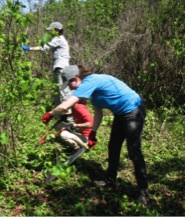
From front to back: Kristina, Shala, and Janice use machetes and loppers clear the area around a test pit

Carolyn repairs a shaker screen before it goes into the field

Kristina sharpens a machete
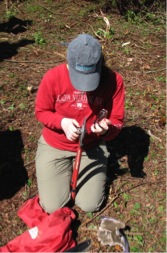
Steph repairs a pair of loppers
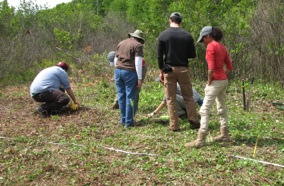
Dr. Heather Trigg instructs students in how to put in a 2 X 2 M unit
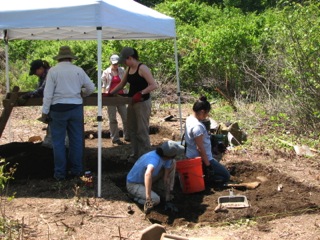
Kristina, Carolyn, and Dr. Trigg screen for artifacts while Janice (back), Kristina and Diana work on making more dirt
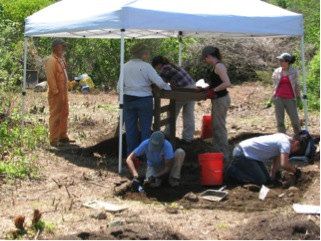
Kristina, Carolyn, and Dr. Trigg screen for artifacts while Kristina and Diana (front) continue digging. Dr. Mrozowski and Janice discuss her unit (back)
So far digging in the rocky New England soil has been a challenge, but since every large rock has the potential to be a part of the foundation we’ve kept going. As part of our sampling strategy Dr. Heather Trigg has been taking soil samples; stay tuned for a post on this fits in to our search for the foundation.
By Jessica Rymer









